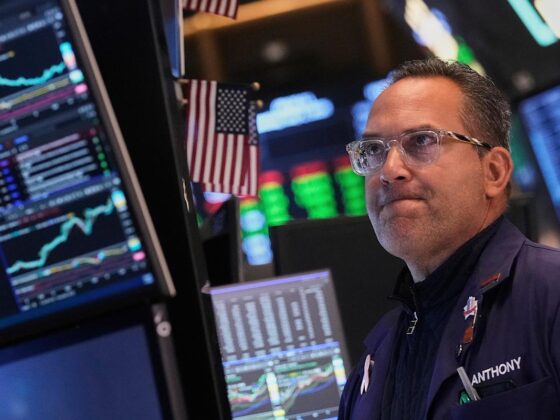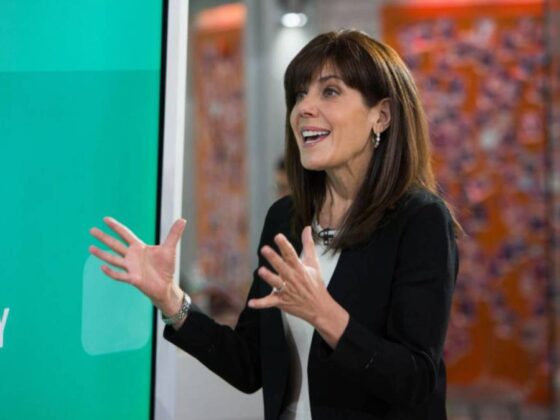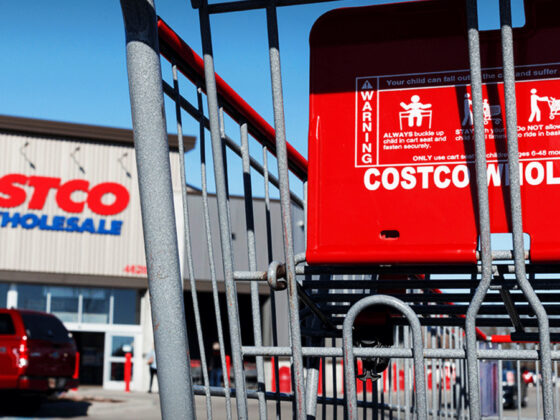The debate over the Federal Reserve's reluctance to lower rates has intensified recently. Those hoping that the Fed would tilt dovish in 2025 after cutting its Fed Funds Rate by 1% last year have been deeply disappointed.
Instead, Federal Reserve Chairman Powell has taken a wait-and-see approach to monetary policy that's drawn sharp words from President Trump and others worried that a weaker economy could tilt into stagflation or recession this year.
There's good reason to worry.
Inflation has proven stickier than hoped, and the US unemployment rate has crept higher since 2023. We've also seen GDP shrink since last summer, and consumer confidence took it on the chin earlier this year when President Trump revealed harsher-than-expected tariffs, including a 30% tariff on China.
Related: Fannie Mae Chair Pulte drops grim message to Fed Chair Powell
The Fed's reluctance to cut rates has created uncertainty in the stock market, contributing to a 19% nearly-bear market drop in the S&P 500 from mid-February through early April.
As a result, most on Wall Street are closely watching economic data, especially job reports, for signals about what will happen to interest rates next, given the impact of interest rate policy on corporate sales, profits, and stock prices.
On July 3, the Bureau of Labor Statistics released its June unemployment report, which was surprising enough to prompt long-time fund manager Chris Versace to revamp his forecast for whether the Fed will reduce rates at its next meeting on July 30.
There is evidence US economy is weakening
While historically still low, unemployment has increased since 2003, partly due to hawkish rate hikes in 2022 and 2023.
There's also been a steady drumbeat of job losses, including earlier this year, when the Department of Government Efficiency, or DOGE, took an axe to Federal spending.
The risk that unemployment continues to rise prompted the Fed to lower interest rates late last year, but the risk of sticky inflation caused by President Trump's recently enacted tariffs has the Fed boxed into a corner.
Related: Veteran analyst sends blunt message on what's next for stocks
The Fed's dual mandate is low unemployment and inflation. However, those goals can contradict each other, making the Fed's job challenging.
When the Fed cuts rates, it can lower unemployment, but it raises inflation. The opposite happens when it raises rates.
The Fed's monetary policy significantly impacts households and businesses. The Fed controls rates by changing the Fed Funds Rate, the interest rate banks charge each other on overnight borrowing.
Therefore, changes to the Fed's interest rate can raise or lower lending rates on everything from credit cards to mortgage loans. Business loans are similarly impacted, and profits and losses can climb or fall with rates for companies with variable interest rate debt or if fixed rate debt is refinanced.
In 2022, the Fed significantly raised interest rates after inflation topped 8%. The hikes worked, given that inflation has fallen below 3%. However, as expected, job losses have increased amid slower economic activity.
In Q1, GDP shrank 0.5% and while the Atlanta Fed's GDPNow forecasts 2.5% growth in Q2, the Federal Reserve and World Bank currently expect GDP growth of just 1.4% for the whole year, down from 2.8% in 2024.
Slowing growth has increased the risk that the Fed's hesitancy to cut rates may mean it's falling behind the curve, increasing the chances of a recession.
As a result, the Fed's next move will be determined by two factors: how sticky inflation proves to be because of tariffs and what happens to the unemployment rate.
Jobs report shocker pours cold water on July rate cut chances
After the Fed decided to keep rates unchanged at its June FOMC meeting, some Fed members, including Federal Reserve Governor Michelle Bowman, said they'd support a rate cut in July.
As a result, the probability of a July interest rate cut swelled to roughly 24%, according to the CME's closely tracked FedWatch tool.
More Federal Reserve:
- Fed interest rate cut decision resets forecasts for the rest of this year
- Federal Reserve prepares strong message on long-term interest rates
- Fed official revamps interest-rate cut forecast for this year
Unfortunately for those in the ‘cut rates now' camp, the BLS June jobs report released on July 3 appears to have dashed those hopes.
“The June Employment Report surprised to the upside with 147,000 jobs added during the month, up modestly from the upwardly revised May figure of 144,000 and the market forecast of 110,000,” wrote long-time fund manager Chris Versace on TheStreet Pro. “The June Unemployment Rate ticked lower to 4.1% from 4.2% in May, not rising to 4.3% as the market expected it would.”
The downtick in joblessness throws a monkey wrench in the possibility that interest rates will head lower later this month.
“That’s enough jobs being added, especially when paired with recent inflation data, for the Fed not to deliver a rate cut later this month, especially with the Unemployment Rate inching lower,” wrote Versace.
On the jobs news, the CME's FedWatch probability for a July rate cut fell below 5%.
The strong labor report suggests the US economy is healthy enough for the Fed to continue to watch how tariffs affect prices. Import taxes are widely viewed as inflationary, given that companies are reluctant to absorb them entirely.
So, when could we see another rate cut? Versace thinks that while a September rate cut is still on the table, it's not guaranteed.
“The longer we go without Trump trade deals, the longer it will take tariffs to work through the supply chain,” wrote Versace. “If the market is underwhelmed by the expected trade deal announcements slated before July 9, we could see the rate-cut conversation shift to the Fed’s October meeting.”
Related: Legendary fund manager issues stock market prediction as S&P 500 tests all-time highs













